When you think of visiting Wat Gate the first thing that comes to many people’s minds, whether they are tourists, or travellers, would probably be the nightlife, especially since The Riverside opened in 1984, marking the beginning of the river banks’ nightly social scene. Along with The Goodview bar and restaurant, Wat Gate’s been the evening destination for Chiang Mai’s party people for over a generation. But over the past decade, Wat Gate has become a wonderful daytime destination as well, what with its great restaurants and cafes, galleries and boutiques. But shopping and eating aside, if you have some spare time, we recommend you take a walk around Wat Gate, check out some of the lovely architecture, visit a few museums and get to know some of the fascinating communities living together in this small area.
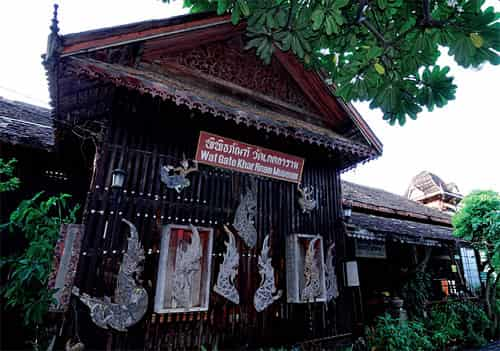
Wat Gate Garam is a temple that was established by King Sam Fung Gan (พระเจ้าสามฝั่งแกน) of Chiang Mai back in the fifteenth century, and the reason the area is called Wat Gate. In the nineteenth century, the area near the river was famous for trading and this was the golden era the many merchants in the area who settled there and whose many houses remain today. In 1855, following the Bowring Treaty, which opened up trade between Siam and the United Kingdom, the Borneo Company arrived in Chiang Mai and began to log and trade teak. Wat Gate became the docking and trading area for much of the Borneo Company’s business and many of the laborers were Laos and Khamu people. It wasn’t long before Indian and Chinese merchants moved in, some being Buddhist while others Muslim. Records show that it was 1867 when the first Muslim family settled in this neighborhood, being an Indian merchant named Abdul-Rahman and his Yong wife named Kiaw. Their daughter later married a Chinese Muslim transporter of goods, and descendants of this family of Chinese-Indian Muslims are still living in the area today, in a community their forefathers established. In the following year, the American missionaries arrived and soon established schools and hospitals nearby.
In 1945, the first Sikh family travelled from Burma to Chiang Mai, and two years later, four other Sikh families migrated to Wat Gate where they built a single-story house and used it for religious ceremonies.
Today all these communities continue to coexist in Wat Gate while retaining their cultural heritage. Through the generations there have been many cross-cultural marriages which has maintained the harmony and balance of a small area which is home to so many different people and beliefs.
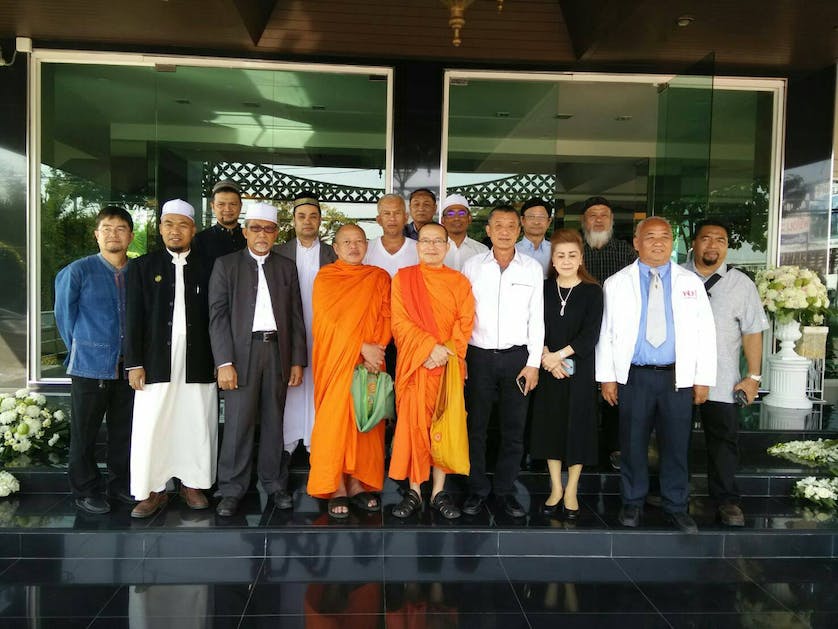
With strong Buddhist, Sikh, Muslim and Christian communities living in such close proximity, one might worry that there would be conflict. But the Wat Gate community has turned their diversity into strength, coming together in times of need. Several years ago, the new city planning project announced that Wat Gate area would become a Red Zone, which would mean that tall buildings can
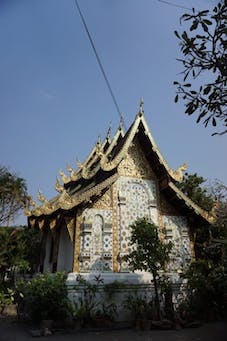
be built in the area, and roads expanded. The communities came together to discuss this proposal and decided that they rejected it as it would threaten their cultural identities as well as their quality of life. The leaders of all four religions therefore came together in protest against the municipality, finally convincing authorities to instead change the designation from Red commercial Zone to the Residential Conservation Zone it is today. It isn’t just in times of trouble that the communities merge, but also in times of joy. For instance, families from all backgrounds anticipate the annual Children’s Day event held at the Attaqwa Mosque where the Muslim residents prepare free food, gifts and fun games for the children who come. Uncle Pun, a local Buddhist and owner of Huan Ka Jao Restaurant, supplies all the drinking water for the day for free each year. I have lived here for all of my life and have never seen any conflict. I therefore decided to find out why and sat down with a former member of the Wat Gate Committee, who told me that first and foremost everyone identifies as a Lanna citizen, and that is the tie that binds. Our ancestors who married the local people here made it easy for newer generations to be accustomed to the mixed culture. This strong multi-religious bond is what I think makes Wat Gate Community special. I spent one afternoon visiting each religious attraction around the community to talk to the local people and religious leaders and found out more about what creates this tight bond amongst these multi-religious people.
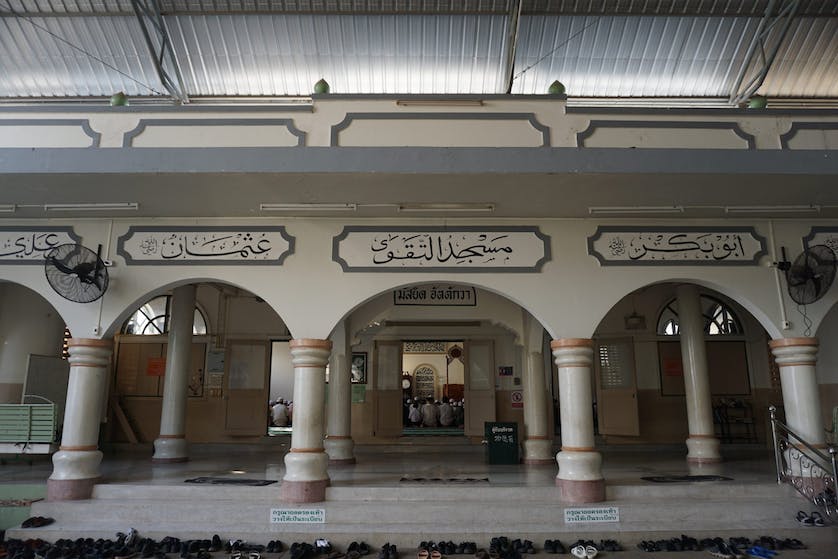
“The Muslims always walk pass our temple and the locals of every religion here gather and join in activities from time to time. We lend others things they don’t have, and we borrow things we don’t. When Muslims join our activities, they prepare their own food since they can’t eat pork and we understand that,” explained grandma Lamai, an 85 year old lady who sells candles and flowers for merit making in Wat Gate temple. She adds that the Sikhs even invited the monks to make merit at their temple. As she shares her experiences of living here, I noticed a smile on her face. The smile that shows how proud she is to live in this community.
After visiting the temple, I headed straight to the First Church of Chiang Mai located on the same road. Professor Boonyawat Manopan is the pastor there, and I was lucky enough to have him share stories with me about how the Christians contribute to people of different religious backgrounds in Wat Gate. “The Christians are happy to live with people of different religions. As you can see just along one kilometre of road, there is a Sikh temple, a mosque, a temple, and a church,” he said before quoting the bible. “Love your neighbour as yourself.”
As I mentioned earlier, the missionaries settled in this community to spread Christianity to the locals. However, that was not their only intention. Going back 150 years, locals blamed their illnesses and ailments on evil spirits and superstition. It was the Christians who came and cured these illnesses and introduced more modern ways of thought that involved science and medicine. The set up schools to further educate the local community and girls were allowed to receive a proper education and were no longer restricted to traditional female roles, further breaking down gender inequality in the area.

Professor Boonyawat added that the Christians cared for the environment in the community as well. “We’re planning to build a museum as a source of learning for people to conserve the Ping River,” he explained, an idea that was inspired from Sweden, where a learning centre was constructed to help teach people about the importance of a river that had been contaminated by factory waste. “We have to take care of our river, because we have to live with it,” said Professor Boonyawat.
For anyone wanting to visit the real Wat Gate and experience this rich, multi-faith, multi-cultured part of Chiang Mai, then head down to some of the more hidden roads and explore. Strolling around the area for just one day, you will come across ancient architecture, various religious buildings and communities both old and new, people from different ethnic groups sitting and enjoy each other’s company and a complete absence of any religious tension in the community. Growing up in this community taught me so much about being an open-minded person and to accept other people’s beliefs, and every visitor I meet also seems to come away with a new outlook on how a community like ours not only coexists, but thrives.
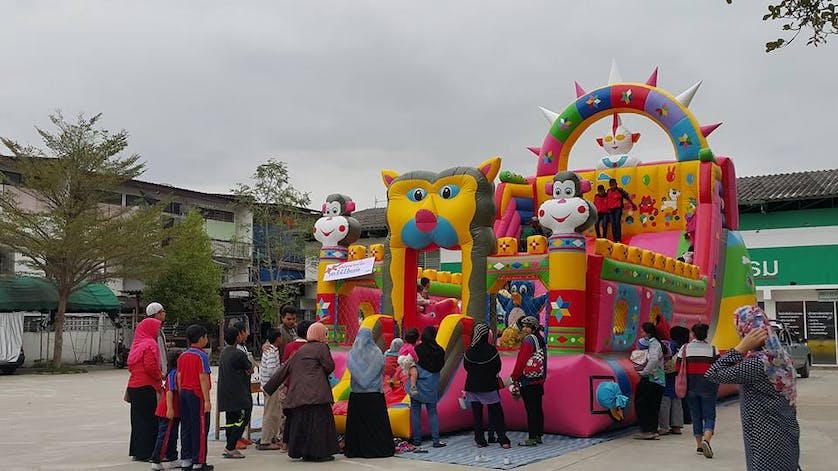
Highlights in Wat Gate
Wat Gate Museum
This old building used to be a pavilion that almost got destroyed. Inside, there is a collection of ancient utensils and clothing donated by people in the community.
Open 8am- 4pm
Located in Wat Gate Garam temple
96 Baan Wat Gate Charoenrat Road Wat Gate Chiang Mai
Tel. 053 262 605
Vieng Joom On Teahouse
A nice-looking pink building houses tea from many places around the world. The design was inspired the owner’s affection for pink castles and houses that she has seen in Chainpura, India.
Open 10am- 7pm
Located at the Ping riverside behind Wat Gate Temple
Tel. 0-5330-3113
Forest Bake
Right next to the famous Hinlay Curry House, stands a small cabin selling homemade organic breads. After buying the fresh baked goods, this place is just perfect for taking pictures to post on Instagram.
Open 10:30am- 5 pm (closed Mondays-Tuesdays)
8/1 Soi 1 Kaew Nawarat Road (near 137 Pillars House Hotel)
Tel. 053 242 621
The Meeting Room Art Café
This is one of the old wooden houses that can still be seen in Wat Gate community. The owner turns this house into a coffee shop that allows customers to have a look at their art gallery as well. Spending a day chilling in this café might be a good idea if you happen to pass by.
Open 11am- 8pm
Located diagonally across from Wat Gate Temple
Tel. 080 627 9219
